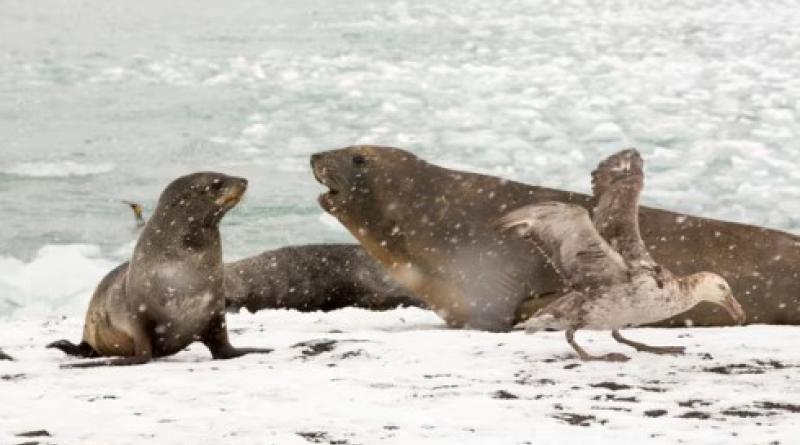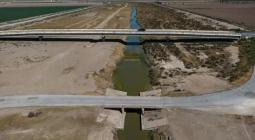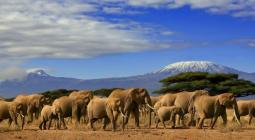Mass deaths of elephant seals recorded as bird flu sweeps across the Antarctic

Bird flu is spreading in the Antarctic, with hundreds of elephant seals found dead, and fears it could bring “one of the largest ecological disasters of modern times” if the highly contagious virus reaches the remote penguin populations.
The virus was first reported among brown skua on Bird Island, off South Georgia. Since then, researchers and observers have reported mass deaths of elephant seals, as well as increased deaths of fur seals, kelp gulls and brown skua at several other sites. Cases have been confirmed 900 miles (1,500km) west of South Georgia, among southern fulmar on the Falkland Islands.
Dr Meagan Dewar, chair of the Antarctic Wildlife Health Network, told the Guardian that the situation among southern elephant seals was concerning. “At some sites we’ve had mass mortalities, where we are getting into the hundreds,” she said. “There is a likely chance it could be avian influenza.”
So far tests have confirmed bird flu deaths at eight sites across the Antarctic, and the disease is suspected with confirmation from tests still pending at 20 further sites where animals have died.
Researchers reported that a number of elephant seals had been exhibiting symptoms of avian flu, such as difficulty breathing, coughing and accumulations of mucus around the nose. Lethargy, spasms and an inability to fly are symptoms in birds.
While a number of seabird cases have been confirmed, many – including the elephant seals – are still classed as suspected, pending lab results.
So far there are no recorded cases on the Antarctic mainland – home to unique ecosystems that are some of the world’s most isolated – but the disease is expected to arrive in the coming months as birds move.
Dewar said: “It’s devastating to watch that happen and recording all the cases we’re getting.”
Penguins are starting to cluster together as the breeding season starts, and this close contact makes them particularly vulnerable. Previous outbreaks in South Africa, Chile and Argentina show they are susceptible to the disease.
“If the virus does start to cause mass mortality events across penguin colonies, it could signal one of the largest ecological disasters of modern times,” researchers wrote in a pre-print research paper last month.
Many species in the Antarctic are found nowhere else, so the consequences for the region of highly pathogenic avian influenza (HPAI) spreading are unknown.
The Scientific Committee on Antarctic Research said recently: “Given the dense breeding colonies of wildlife in the Antarctic and sub-Antarctic regions, HPAI is expected to have devastating impacts on the wildlife and to lead to catastrophic breeding failure and mortality events in the region.”
The virus has killed an estimated 20,000 sea lions in Chile and Peru. Dewar said: “If we start to get outbreaks similar to what we’ve seen in South America that could have very big impacts. Emperor penguins and chinstrap penguins have been taking significant declines, so if we get large outbreaks in those species, that could cause further pressure on those colonies.”
The current outbreak of the highly infectious variant of H5N1 – which started in 2021 – is estimated to have killed millions of wild birds. The strain spreading in Antarctica is clade 2.3.4.4b, which has decimated bird populations across the UK, continental Europe, South Africa and the Americas, with seabird colonies experiencing losses of 50% to 60%. The H5N1 strain has not yet reached Oceania
Dr Michelle Wille, from the University of Sydney, who is helping to record deaths, said: “It’s terrible news that it’s now in the sub-Antarctic, and we are very worried about viral spread into the Antarctic. In addition to negative affects on animals, the ‘removal’ of vast numbers of animals from the Antarctic ecosystem may have long-term ecosystem effects.”
Researchers from the British Antarctic Survey and the British government’s Animal and Plant Health Agency are identifying possible cases, testing them and sharing data. It is challenging to record what is happening because of the size of Antarctica and the small number of people monitoring it. A number of reports of mass deaths have come through tour vessels.
Many places in South Georgia are now closed to tourists and even researchers have to go through a number of procedures to get there in a bid to stop the disease spreading, said Dr Michael Wenger, who trained as a marine biologist and has been working as a guide in Antarctica for 18 years.
He added: “It’s already hard to estimate numbers in normal situations, because the area is huge and there are a lot of animals. Now with the areas closed, it’s even harder.”
Photograph: Ashley Cooper/Alamy





